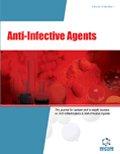Abstract
Fungal infections are one of the major causes of fatalities worldwide,
causing an estimated 1.5 million deaths annually. Over the past few decades, the
incidences of fungal infection have risen with the increase in the cases of
immunocompromised patients. However, the impact of fungal diseases on public health
is often underestimated. These infections are predominantly caused by the Aspergillus,
Candida, and Cryptococcus species. Current therapeutic approaches to treat such
fungal infections are limited to five distinct classes of antifungal drugs, viz. polyenes,
echinocandins, azoles, pyrimidine analogs, and allylamines. Moreover, a few synthetic
molecules are also used as fungicidal agents. Despite the current antifungal
armamentarium, the burden of fungal infection is exacerbated by the emergence of
drug resistance, host toxicity, and negative interactions with other drugs. The paucity of
new antifungal drugs has further complicated the treatment of fungal infections. These
limitations provide a rationale for developing novel antifungals preferably with new
mechanisms and molecular targets. This chapter thus summarizes the currently used
antifungal drugs, their effective combinations, and the challenges inherent to the
development of new antifungal drugs. The chapter also addresses strategies to bolster
the antifungal pipeline involving emerging new targets for better management of fungal
infections.
Keywords: Antifungal agents, Antifungal drugs, Antifungal peptides, Azoles, Clinical trials, Echinocandins, Emerging targets, Ergosterol, Fungal diseases, Fungal infections, Fungal resistance, Mycosis, Multidrug resistance, Polyenes, Pyrimidine analogs.






















